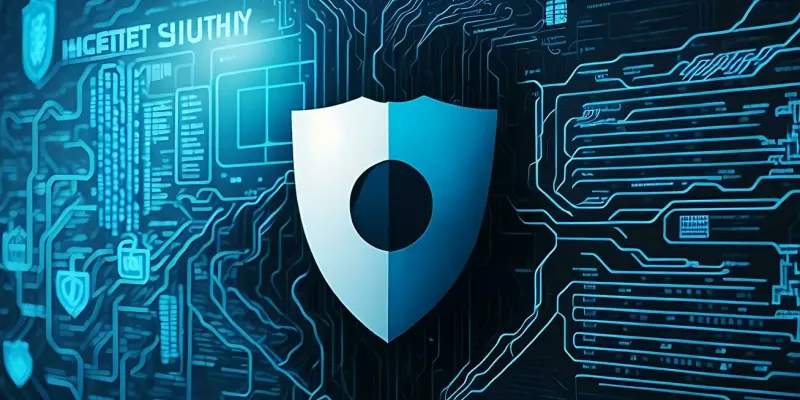In the rapidly evolving domain of Software-as-a-Service (SaaS), the rush to deliver faster and more efficient service models has dominated industry trends. The fast pace at which new features, improvements, and solutions are offered is undeniably driving innovation; however, this reactionary pace may conceal underlying vulnerabilities that manufacturers can overlook in the race for market dominance. Security risks associated with SaaS delivery have come under intense scrutiny, exemplified by the pressing concerns expressed by JPMorgan Chase’s Chief Information Security Officer (CISO), Patrick Opet. Emphasizing the systemic risks these practices bring, Opet highlights the delicate balance providers must strike between speed and rigorous security measures.
The Threat Landscape
Systemic Vulnerabilities and Concentration Risk
One of the pressing concerns revolves around concentration risk, which involves the danger that arises when numerous organizations become reliant on a single supplier. In this scenario, a security breach affecting an individual vendor has the potential to initiate a cascade of repercussions across different entities. The scale of such risk is amplified by the reliance SaaS providers place on interconnected systems, where one’s security lapse can serve as a penetration point, spreading rapidly across partners. Opet cautions that such dependency creates a fragile trust framework, subject to exploitation by adept threat actors. Insecure authentication tokens further exacerbate this risk by providing malicious entities with an entry point into otherwise secure networks, weakening the boundary between trusted internal systems and external, potentially compromised, resources.
The Overlooked Danger of Third-Party Vendors
Another significant security risk highlighted by Opet stems from the expansive use of fourth-party vendors. These vendors often operate under opaque relationships and complicate the security landscape by introducing vulnerabilities upstream. While third-party service providers are not directly engaged with the end consumers, their integration amplifies the scope of potential attacks. In cases where vulnerable components or nontransparent dependencies exist, the potential for exploitation increases manifold. This raises concerns over accountability and response speed should an attack occur. The interlinked web of providers, driven by the necessity to expedite service delivery, inadvertently creates pathways that adversaries can navigate with relative ease. This growing web of dependencies calls for a reevaluation of how security strategies are deployed across digital ecosystems.
The Growing Data Management Challenge
Impact of Data Expansion and AI Integration
The explosive growth in data management, coupled with the rise of artificial intelligence (AI), presents a monumental challenge in maintaining robust security measures within SaaS platforms. As organizations strive to harness the power of vast data repositories augmented by AI technologies, the risk profile evolves, requiring continuous adjustment and enhancement of security postures. Speed and agility in deploying AI-driven solutions introduce new layers of complexity, demanding that security considerations accompany every developmental phase. Yet, the drive for innovation often means these critical defensive measures are given secondary priority, overshadowed by the need for rapid deployment. The concentrated power AI wields presents unprecedented risks, as vulnerabilities in AI models or data processing mechanisms can have cascading effects, leading to systemic failures and breaches.
Security-First Strategies for Mitigation
Addressing these evolving threats requires a decisive shift towards security-first strategies that prioritize stringent authentication and robust authorization methods. Collaboration between consumers and providers is crucial to craft solutions tailored to preemptively address potential security lapses inherent in these rapidly advancing technologies. Such partnerships can facilitate the formulation of intelligent, comprehensive security frameworks that balance the capabilities and requirements of AI integration with appropriate safeguards. Organizations must actively demand enhancements and maintain vigilance to ensure that all innovations adhere to stringent security standards. Patrick Opet calls for providers to adopt this paradigm, asserting that only through precise collaboration and assurance of secure operational environments can the industry chart a sustainable path forward.
A Call for Evolved Security Practices
Addressing Consumer Demand for Enhanced Security
At the heart of this pressing issue is the growing demand from consumers for increased focus on securing their digital assets without sacrificing service efficiency. The frustrations around perceived lapses in security are echoed throughout the market, where practical examples illustrate the consequences of prioritizing speed over robust measures. Industry stakeholders suggest that meaningful change is on the horizon as consumer advocacy shapes the landscape of SaaS offerings. By fostering awareness and demanding accountability, stakeholders can prompt providers to innovate responsibly, ensuring that security measures keep pace with service evolution. A marketplace driven by conscientious consumer demands could alter the trajectory, enforcing the balance between speed and security that the industry desperately needs.
Toward an Equilibrium in SaaS Security Practices
In the swiftly advancing world of Software-as-a-Service (SaaS), a relentless drive to provide speedier and more efficient service models is shaping industry trends. The rapid introduction of new features, improvements, and solutions is undeniably fueling innovation in the sector. Nonetheless, this hurried pace can mask vulnerable points that manufacturers might neglect in their quest for market supremacy. Security threats linked to SaaS delivery have become a focal point of scrutiny, especially highlighted by pressing concerns voiced by Patrick Opet, JPMorgan Chase’s Chief Information Security Officer (CISO). He underscores the systemic risks introduced by these practices, accentuating the delicate equilibrium providers must maintain between rapid delivery and stringent security protocols. As the demand for agility grows, the challenge becomes ensuring that robust security standards are not compromised, underscoring the need for a thoughtful approach to balancing speed and safety in SaaS offerings.

